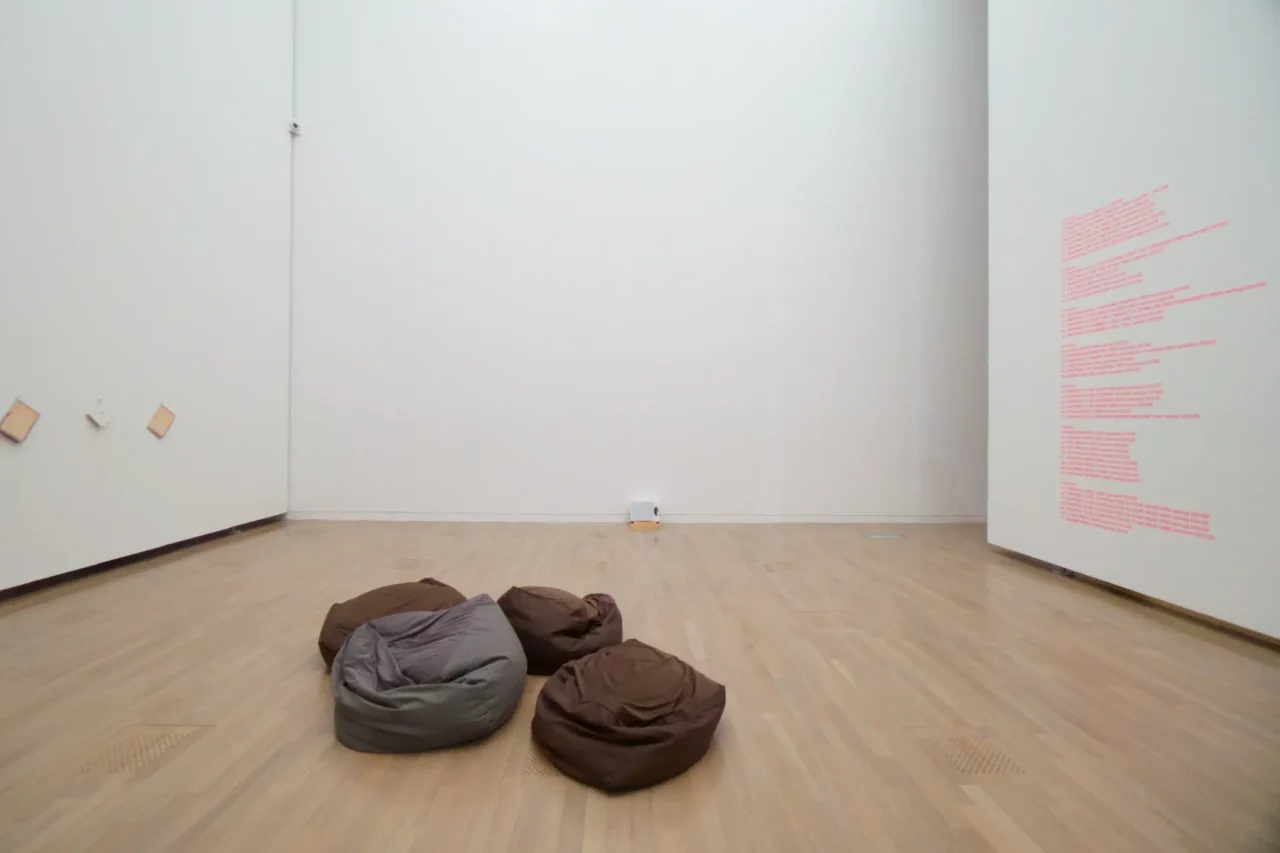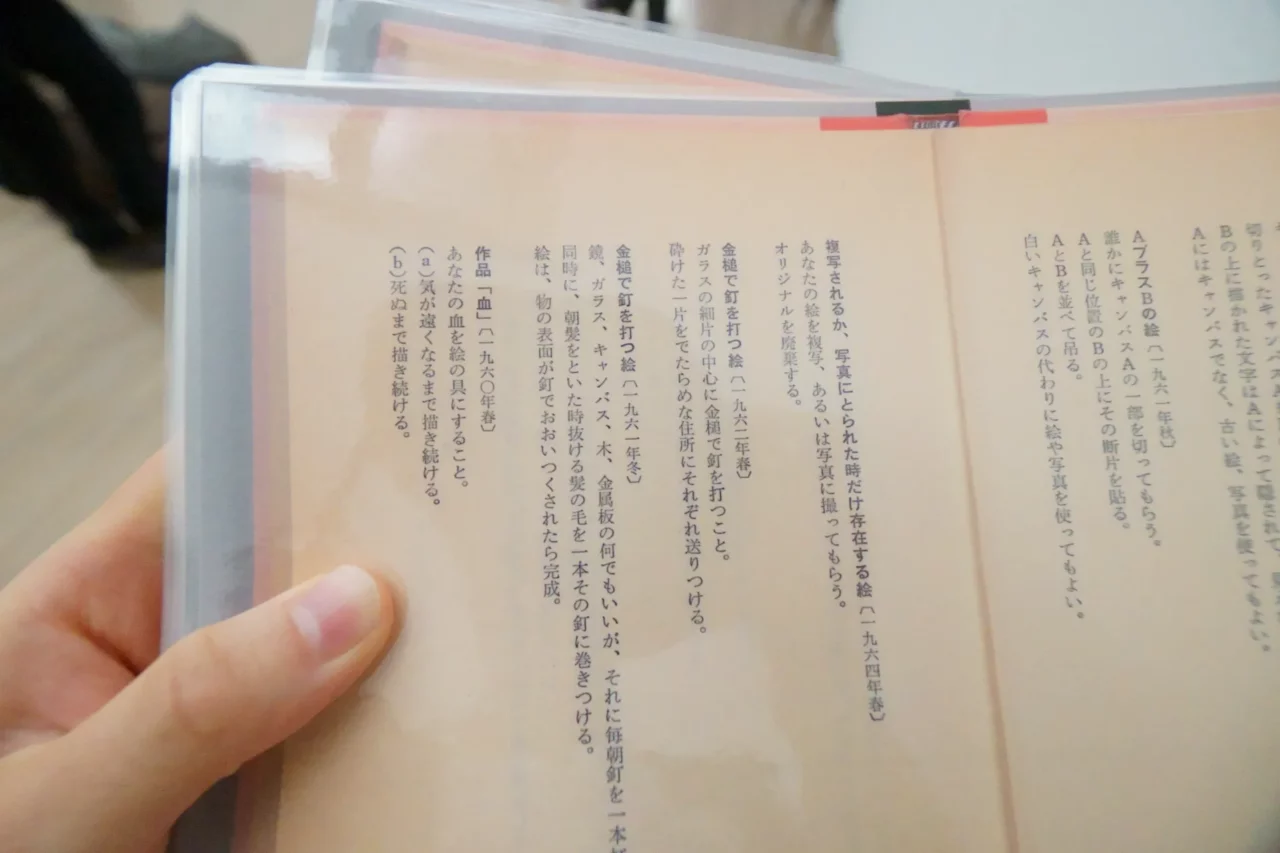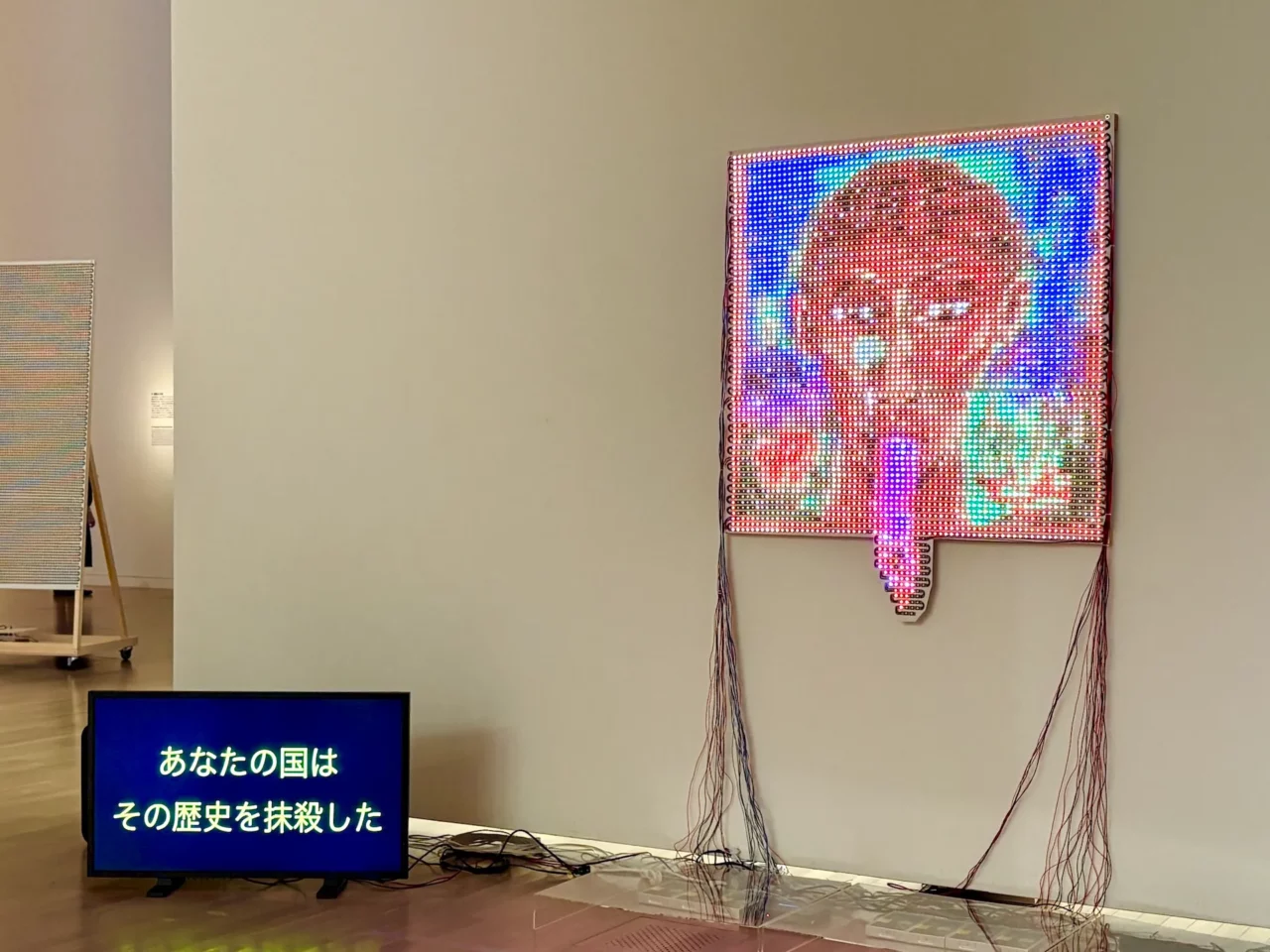INDEX
A Deeply Immersive Experience of Painting and Music
Perhaps the highlight of the exhibition is Section 5, “Painting and Music.” I was deeply moved by the way musicians earnestly engage with painting and create new music inspired by its influence.

The new song “Kotori Yōbi” by Yumi Matsutoya, debuting at this exhibition, is a melancholic track about a little bird that once visited the window but has now flown away, leaving no trace—just as the bird doesn’t remember her. As you walk through the gallery, the trees in the exhibition rooms subtly stretch their shadows in irregular rhythms, evoking a sense of time passing like a time-lapse video. Standing still and immersing yourself in the music, you are enveloped by a strange feeling as if the world is moving ahead without you.

Where is the bird in Kotori Yōbi? In this installation, it is likely the viewer themselves. From behind a window-like frame, Henri Matisse’s Face gazes at the people who visit and then leave the gallery. Compared to that face, which will endure through time as art, our individual lifetimes are fleeting, and our encounter with it is but a brief moment. The Matsutoya family has long had Matisse’s drawings displayed in their home, and it was through this that Masataka Matsutoya came to believe that “humans and paintings perceive time differently,” leading to the creation of this installation. Indeed, it makes sense.

Kim Gordon, a member of the band Sonic Youth and a star of alternative rock, presents the work Sound Event for Yoko Ono’s “Instruction Painting”. In the exhibition, short but intense melodies, composed based on Yoko Ono’s text, play at intervals. With 47 pieces, each lasting between 10 seconds to a minute, you would need to settle into a beanbag and patiently wait to hear them all. Upon reflection, sitting so close to the floor of the museum is a rare experience in itself.

On the wall, Yoko Ono’s text is provided in both Japanese and English, allowing you to draw it closer and match it with the music. Kim Gordon murmurs the title of each song at the beginning, so you can try to catch it by ear. Alternatively, it can be interesting to listen closely to the music and try to deduce the original text based on the imagery the song evokes.

I must mention Hello Hello Hello Hello, which stood out in this section with a particularly sharp brilliance. Alongside Ei Arakawa-Nash’s recreation of David Medalla’s self-portrait using LED lights, Miho Hatori’s bright yet sinister pop music plays. The title “Halo-halo,” which means “mixed up” in Tagalog, refers to a popular Filipino dessert that is mixed together before eating. While you might expect the sweet lyrics “Mix it well / Mix it well,” the song turns into a chillingly sharp track that exposes the Japanese military’s occupation of Manila and the cover-up of wartime atrocities. It’s a work where cuteness and unease are “mixed” together. The piece evokes a strange freshness, with a sense of resilience, asking: “What’s wrong with mixing all of the past, present, and future together and enjoying it?”
























